If you have hydrangeas and their leaves are turning brown, you may be wondering what is causing this and what you can do about it. There are several potential causes for brown leaves on hydrangeas, including too much sun, too little water, or a fungal disease. Luckily, there are also several solutions that can help you get your hydrangeas back to looking their best.
Causes of Hydrangea Leaves Turning Brown
One possibility is that the plant is not getting enough water. Make sure to water your hydrangea regularly, especially during hot weather. Another possibility is that the plant is getting too much sun. Hydrangeas prefer partial shade, so if they are in full sun, they may start to experience leaf scorch, which will turn the leaves brown. If you think your plant might be infected, take a sample of the leaves to your local nursery or Cooperative Extension office for diagnosis. There are a few reasons why hydrangea leaves might turn brown. Finally, hydrangeas are susceptible to a number of fungal diseases, which can cause the leaves to turn brown.
Diseases of Hydrangea Cause Brown Leaves
Hydrangeas are a popular flowering shrub, but they can be susceptible to a number of diseases that can cause their leaves to turn brown.
The best way to prevent powdery mildew is to water the plant at the base, rather than from above, and to avoid getting the leaves wet. One of the most common diseases of hydrangeas is powdery mildew, which is caused by a fungal infection. Powdery mildew can cause the leaves of the plant to turn brown and eventually fall off.
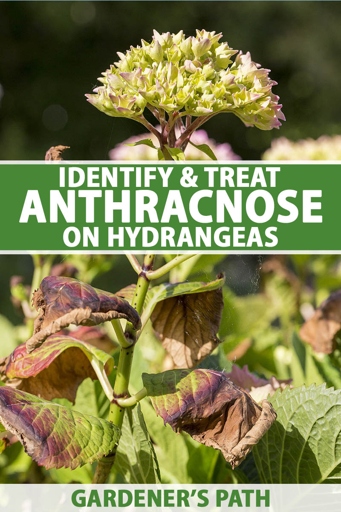
Another disease that can cause brown leaves on hydrangeas is leaf spot, which is also caused by a fungal infection. To prevent leaf spot, make sure to water the plant at the base and to avoid getting the leaves wet. Leaf spot can cause the leaves to turn brown and eventually drop off.
If your hydrangea leaves are turning brown, it is important to check for these diseases and take steps to prevent them.
Gray rot
The fungus thrives in warm, humid conditions and can be spread by wind, rain, or garden tools. The disease is caused by a fungus called Botrytis cinerea. Gray rot is a disease that affects hydrangeas. The leaves of the plant turn brown and the flowers may drop off. Gray rot can be controlled by pruning affected leaves and flowers, and by applying a fungicide.
Downy Mildew
Downy mildew can weaken the plant and make it more susceptible to other diseases and pests. This disease is characterized by brown or yellow spots on the leaves, as well as a downy white growth on the undersides of the leaves. Downy mildew is a fungal disease that affects many types of plants, including hydrangeas.
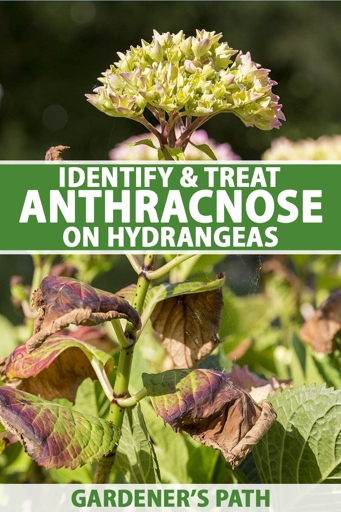
Good air circulation will help to prevent the fungus from spreading. This will help to prevent the leaves from staying wet, which can lead to the development of the fungus. Second, water the plants at the base of the plant, rather than from above. There are a few things that you can do to prevent downy mildew from affecting your hydrangeas. First, make sure that the plants have plenty of space to breathe. Finally, make sure to remove any affected leaves from the plant as soon as possible. This will help to prevent the disease from spreading.
Septoria
If you have hydrangeas and the leaves are turning brown, it’s likely due to Septoria. Septoria is a fungal disease that affects many types of plants, including hydrangeas. The fungus thrives in warm, wet conditions and can cause the leaves of your plant to turn brown and eventually drop off.
Second, water your plants at the base of the plant, rather than from above, to prevent the leaves from getting wet. First, make sure to plant your hydrangeas in well-drained soil. There are a few things you can do to prevent Septoria from affecting your hydrangeas. Finally, prune any affected leaves from your plant to help prevent the spread of the fungus.
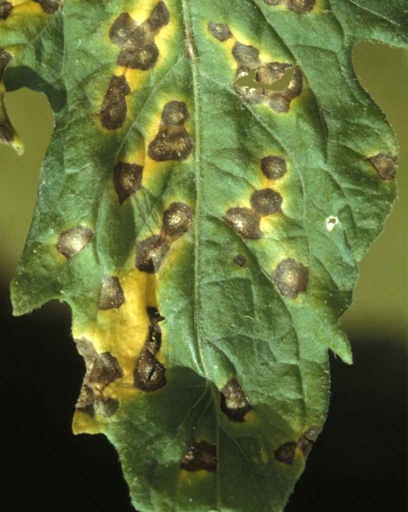
Second, water your plant with a fungicide to help kill the fungus. First, remove any affected leaves from the plant. If your hydrangeas are already affected by Septoria, there are a few things you can do to treat the fungus. Finally, make sure to provide your plant with plenty of air circulation to help prevent the fungus from spreading.
Rusts
Rust is a fungal disease that affects many types of plants, including hydrangeas. Rust is one of the most common causes of brown leaves on hydrangeas. Hydrangeas are a beautiful addition to any garden, but their leaves can sometimes turn brown. If you do notice rust on your plants, you can try to remove it with a fungicide. The best way to prevent rust is to water your plants regularly and to avoid overhead watering. Rust can be caused by several different fungi, and it is often difficult to control.
How to Fix:
If your hydrangea leaves are turning brown, don’t despair! There are a few possible causes and solutions.
If your plant is in a sunny spot, try moving it to a shadier location. One common cause of brown leaves is too much sun. Another possible cause is too much water. Make sure you’re not over- watering your plant and that the soil is well-drained.
If you see any pests, treat them with an insecticide. Aphids, scale, and mites can all cause brown leaves. If you’ve ruled out these possible causes, the next step is to check for pests.
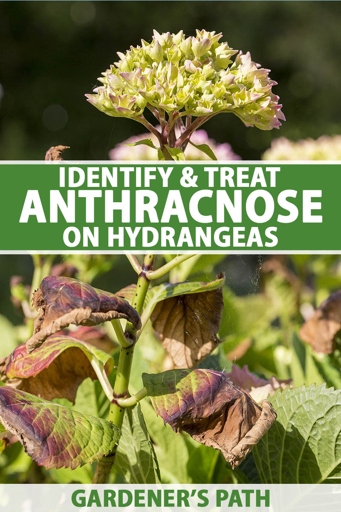
This won’t fix the underlying problem, but it will improve the plant’s appearance. Finally, if all else fails, you can try pruning your plant. Cut off any brown leaves and stems.
Overwatering Leads to Root Rot Disease
This disease is caused by a build-up of water in the soil which leads to the roots of the plant being unable to get the oxygen they need. This can cause the leaves of the plant to turn brown and eventually die. Overwatering is one of the leading causes of root rot disease in hydrangeas.
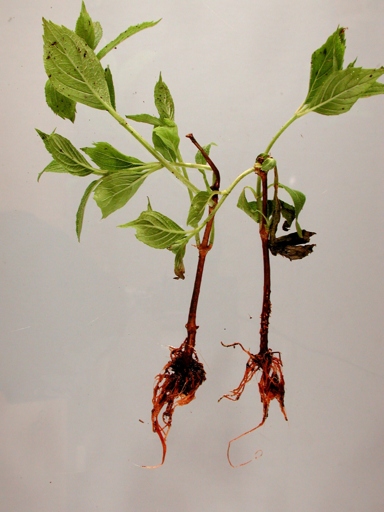
If you notice the leaves of your plant starting to turn brown, you can try to save it by watering less frequently. To prevent this from happening, it is important to water your hydrangeas only when the soil is dry to the touch. However, if the root rot disease has already set in, it is likely that the plant will not be able to be saved.
How to Fix:
Finally, if the problem is nutrient deficiency, fertilize your plant with a balanced fertilizer. If the problem is poor drainage, try adding organic matter to the soil to improve drainage. If the problem is lack of water, make sure to water your plant deeply and regularly. First, check for pests or diseases and treat accordingly. If the problem is too much sun, try moving it to a shadier spot. If your hydrangea leaves are turning brown, there are a few potential causes and solutions.
Underwatering Can Cause Hydrangea Leaves to Turning Brown
Hydrangeas are a popular garden plant, known for their large, showy flowers. But if you’re not careful, your hydrangeas can suffer from a common problem: underwatering.
When hydrangeas don’t get enough water, their leaves can start to turn brown. This is a sign that the plant is stressed and is not getting the moisture it needs to stay healthy.
They should be getting at least an inch of water per week, either from rainfall or from irrigation. There are a few things you can do to prevent underwatering from happening in the first place. First, make sure you’re watering your hydrangeas regularly.
Check the soil around your plants to see if it’s dry; if it is, give them a good soaking. If you live in an area with hot, dry summers, you may need to water your hydrangeas more often. Once a week may not be enough.
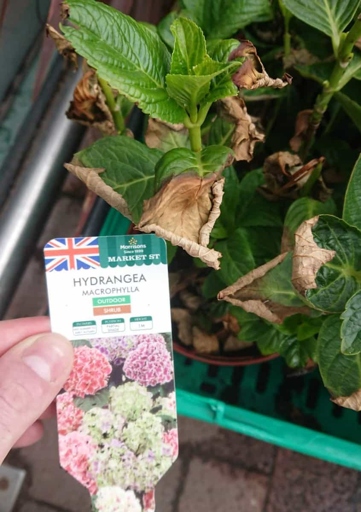
Give them a deep watering, and then continue to water them regularly until they recover. With a little care, your hydrangeas will be back to their beautiful selves in no time. If your hydrangeas are already showing signs of stress, it’s important to take action quickly.
Solution
If your hydrangea leaves are turning brown, don’t despair! There are a few possible causes and solutions.
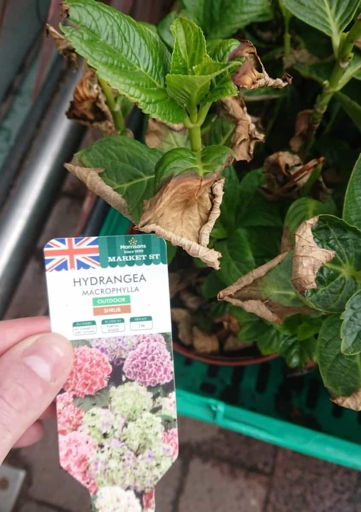
One common cause of brown leaves is too much sun. The solution is to move your plant to a spot that gets a little less sun. Hydrangeas prefer partial sun, so if yours is getting too much direct sunlight, the leaves will start to brown.
Another possible cause is overwatering. If you’re watering your hydrangea too often, the roots can’t get the oxygen they need and the leaves will start to turn brown. The solution is to cut back on watering and make sure the soil is well-drained.
With a little care, your hydrangea will be back to its beautiful self in no time! If you’re not sure what’s causing the brown leaves, try one of these solutions and see if it makes a difference.
Pest Infestation
Here are some of the most common pests that can infest your plants, and how to deal with them. Pest infestation is one of the most common problems that gardeners face. There are a variety of pests that can infest your plants, and each one has its own set of problems.
To get rid of aphids, you can use a variety of methods, including spraying them with water or insecticidal soap. They can cause a great deal of damage to your plants, and are particularly fond of hydrangeas. Aphids are small, soft-bodied insects that feed on the sap of plants.
Mealybugs are covered in a white, waxy substance, and can often be found in the crevices of leaves or stems. Mealybugs are another type of sap-sucking insect that can damage your plants. To get rid of mealybugs, you can use an insecticidal soap or horticultural oil.
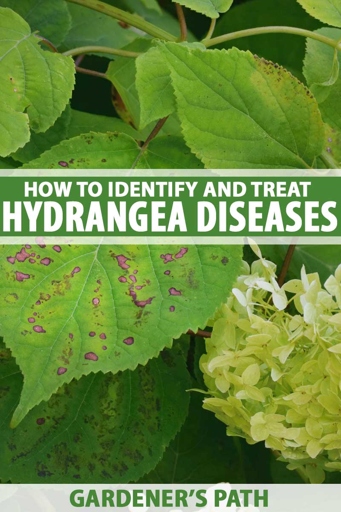
Scale insects are small, hard-bodied insects that feed on the sap of plants. To get rid of scale insects, you can use an insecticidal soap or horticultural oil. They can be difficult to control, as they often hide under the bark of trees or in the crevices of leaves.
These pests can cause a great deal of damage to your plants, and the sooner you take care of the problem, the better. If you have a pest infestation, it is important to take action quickly.
Aphids
They are often found in large groups on the undersides of leaves, and can cause the leaves to turn brown and curl. Aphids are small, soft-bodied insects that are typically green, but can also be brown, black, or yellow. Aphids can also transmit diseases from plant to plant.
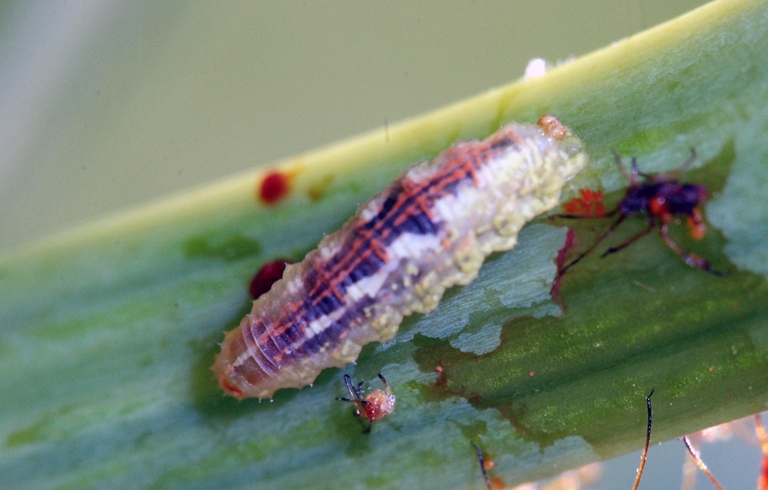
You can also try spraying the plants with water to knock the aphids off, or using a strong stream of water from the hose. Aphids are most often controlled with insecticidal soap, which will kill them on contact. If the infestation is severe, you may need to use an insecticide.
Spider Mites
Spider mites are tiny, spider-like creatures that feast on the leaves of plants, including hydrangeas. While spider mites are difficult to control, there are a few things you can do to get rid of them. These pests can cause the leaves of your hydrangea to turn brown and eventually drop off the plant.
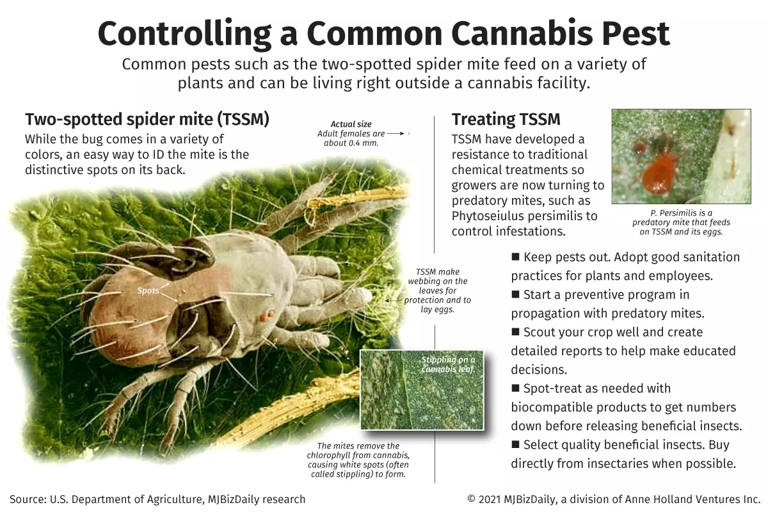
You can also try using a horticultural oil or insecticidal soap to kill the mites. One way to control spider mites is to regularly spray your plants with water. This will wash the mites off of the leaves and prevent them from being able to feed. Be sure to follow the instructions on the label carefully, as these products can be harmful to plants if used incorrectly.
They will be able to treat your plants with a more powerful insecticide that will kill the mites and prevent them from coming back. If you have a serious spider mite infestation, you may need to contact a professional pest control company.
How to Fix:
Finally, check the plant’s fertilizer needs. If your hydrangea leaves are turning brown, there are a few possible causes and solutions. If you see any diseases, treat them with a fungicide. If it doesn’t need more fertilizer, don’t feed it. Third, check the amount of sunlight the plant is getting. Second, check the soil. If it’s getting too much sun, move it to a shadier spot. First, check for pests or diseases. If it needs more fertilizer, feed it. If the soil is too wet, improve drainage. If you see any pests, remove them by hand or with a pesticide. If it’s not getting enough sun, move it to a sunnier spot. If the soil is too dry, water it.
Too Much Heat
If the leaves are brown and wilted, they are probably not getting enough water. If the leaves are brown and dry, they may be suffering from sunburn. Be careful when using these products near your hydrangeas. If the leaves are brown and crispy, they may be burned by chemicals such as herbicides or fertilizers. Make sure to water your hydrangeas regularly, especially during hot weather. Hydrangeas are native to temperate climates and do not tolerate high temperatures well. You can also try moving them to a shadier spot. If your hydrangea leaves are turning brown, it could be due to too much heat. Move them to a spot with less sun exposure and make sure to provide adequate water.
How to Fix:
There are a few things you can do to fix the problem. If you have hydrangeas that are starting to turn brown, don’t panic!
First, check the soil. If the soil is too wet, try to improve drainage by adding some sand or organic matter. If it is too dry, give the plants a good watering.
Try moving the plants to a shady spot or protecting them from the wind. Try spraying the leaves with a fungicide. If they are covered in brown spots, it could be a fungal disease. Next, take a look at the leaves. If the leaves are just turning brown around the edges, it could be a sign of stress.
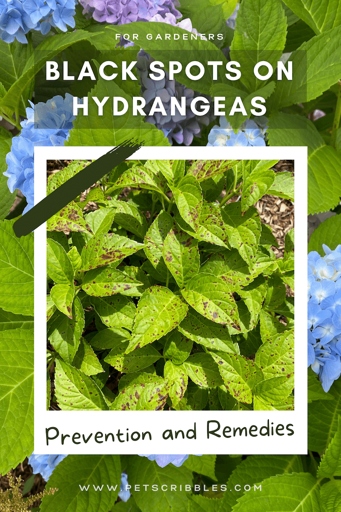
This will encourage new growth, which should be healthier and more resistant to stress. Finally, if all else fails, you can always try pruning the plants back.
Sunburn
If you’re one of the many people who enjoy spending time outdoors, you know that sometimes, despite your best efforts, you can end up with a sunburn. UV radiation is a type of electromagnetic radiation that’s invisible to the naked eye but can be harmful to your health. Sunburn is a type of skin damage that occurs when your skin is exposed to too much ultraviolet (UV) radiation from the sun.
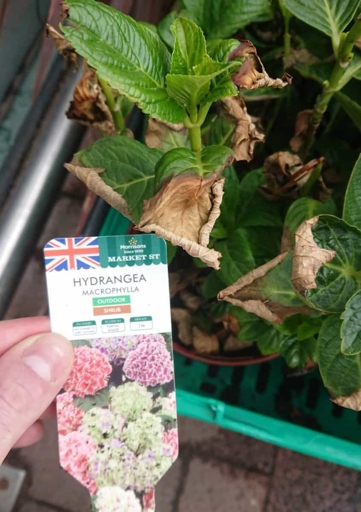
UVB radiation is the main cause of sunburn and is also linked to skin cancer. UVA radiation is the main cause of premature skin aging and can contribute to the development of skin cancer. There are two types of UV radiation: UVA and UVB.
When your skin is exposed to UV radiation, it begins to produce a pigment called melanin. However, when your skin is exposed to too much UV radiation, it can’t produce enough melanin to protect itself, and this can lead to sunburn. Melanin is your skin’s natural way of protecting itself from the sun.
Sunburn can cause a number of symptoms, including red, painful skin, swelling, and blistering. In severe cases, sunburn can also lead to dehydration, fever, and even shock.
In the meantime, there are a few things you can do to help relieve the pain and discomfort of sunburn. If you experience any of these symptoms, it’s important to seek medical attention immediately.
Be sure to avoid hot water, which can further damage your skin. First, get out of the sun and into a cool, shady area. Then, apply a cool, damp cloth to the affected area. You can also take a cool bath or shower.
Look for a moisturizer that contains aloe vera or another soothing ingredient. Next, apply a moisturizer to your skin. This will help to soothe and protect your skin.
This will help your body to heal itself and will also prevent dehydration, which can worsen the symptoms of sunburn. Finally, stay hydrated by drinking plenty of fluids.
However, if your symptoms persist or worsen, be sure to see a doctor. If you follow these tips, you should start to feel better within a few days.
How to Fix:
If your hydrangea leaves are turning brown, don’t despair! There are a few things you can do to fix the problem.
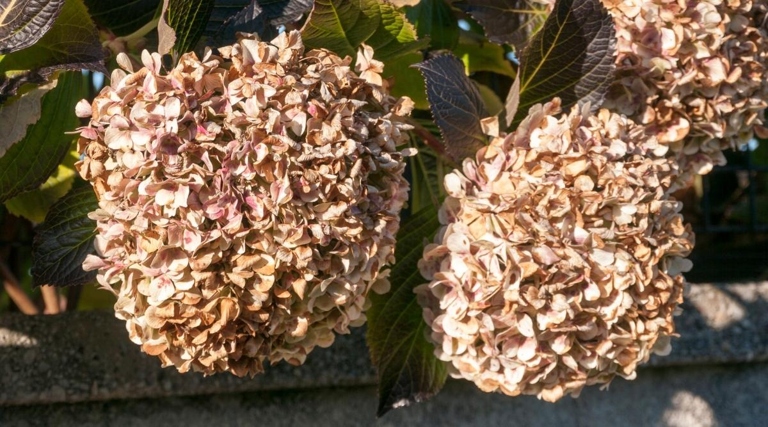
If it is too dry, water your plant deeply. First, check the soil to see if it is too dry or too wet. If it is too wet, try to improve the drainage.
Next, check for pests. Aphids, scale, and mites can all cause brown leaves. If you see any pests, treat them with an appropriate insecticide.
Finally, make sure your plant is getting enough sunlight. If your plant is in a shady spot, try moving it to a sunnier location. Hydrangeas need at least four hours of sunlight per day.
With a little bit of care, you can get your hydrangea leaves back to their healthy green color in no time!
Cold Drafts
To protect your plant, make sure to keep it away from any windows or doors that might let in a draft. If you’re growing your hydrangea indoors, you may need to use a humidifier to keep the air around the plant moist. While hydrangeas are generally pretty tolerant of cold weather, drafts can cause the leaves to brown and wilt. If you’re noticing your hydrangea leaves turning brown, it could be due to cold drafts.
How to Fix:
There are a few possible causes and solutions. If your hydrangea leaves are turning brown, don’t despair!
If you’re watering your plant too frequently, the leaves may start to turn brown. One common cause of brown leaves is too much sun. Another possible cause is too much water. Try cutting back on watering and see if that helps. If your plant is getting too much direct sunlight, try moving it to a shadier spot.

With a little detective work, you should be able to get your hydrangea back to its beautiful self in no time! If you’re not sure what’s causing the problem, take a sample of the affected leaves to your local nursery or garden center for help.
Soil Lacks Water Holding Capacity
When the soil lacks water holding capacity, the hydration process is interrupted and the leaves turn brown. The solution is to water the plant deeply and regularly, and to improve the drainage and aeration of the soil. The soil may be too dry or may have a high clay content.
How to Fix:
If neither of these is the problem, the leaves may be turning brown due to too much sun or too little water. If your hydrangea leaves are turning brown, there are a few possible causes and solutions. If you see any diseases, treat them with a fungicide. First, check for pests or diseases. If the leaves are in direct sun, try moving the plant to a shadier spot. If you see any pests, remove them by hand or with a pesticide. If the leaves are wilting or dry, try giving the plant more water.
Fertilizer Residue or Salt Buildup
Fertilizer residue can happen if you use too much fertilizer, or if you don’t rinse it off the leaves after applying it. Salt buildup can occur if you live in an area with high levels of salt in the air or water. If the leaves on your hydrangea are turning brown, it could be due to fertilizer residue or salt buildup. To prevent either of these problems, be sure to use the proper amount of fertilizer and rinse it off the leaves after applying it. If you live in an area with high levels of salt, you can try watering your plants with distilled water to help prevent salt buildup.
How to Fix:
If you have hydrangeas that are starting to turn brown, don’t worry – there are a few things you can do to fix the problem.
If the leaves are still brown after watering, it’s likely that the problem is due to a fungal disease. If the soil is dry, give the plants a good watering. First, check to see if the brown leaves are caused by a lack of water.

There are a few different types of fungicides available, so be sure to read the labels carefully to choose the right one for your plants. To treat a fungal disease, you’ll need to use a fungicide.
Once you’ve treated the plants with a fungicide, you should see a noticeable improvement within a few days. If the leaves are still brown, you may need to repeat the treatment.
With a little care, you can get your hydrangeas back to their beautiful, green selves in no time.
Transplant Shock
The leaves may turn brown and drop off the plant. The plant is stressed from the move and may not have enough time to adjust to the new environment. If the leaves on your hydrangea plant are turning brown, it could be due to transplant shock. Transplant shock is a common problem when plants are moved to a new location.
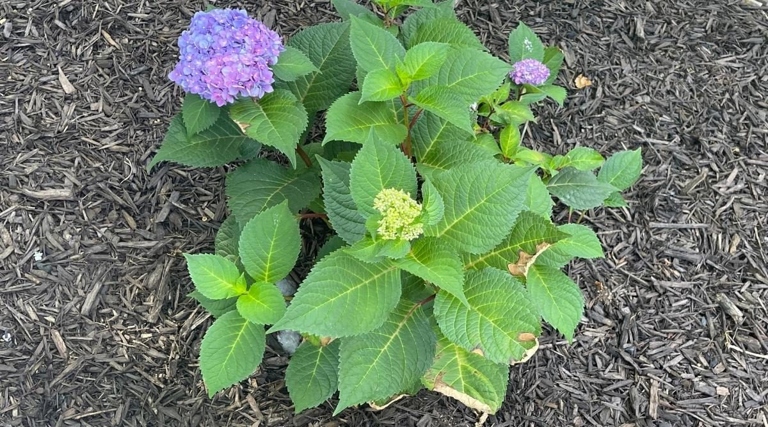
The sun can be too intense for a plant that is already stressed. There are a few things you can do to help your plant recover from transplant shock. Second, give the plant some time to adjust to the new environment. First, make sure the plant is getting enough water. Finally, if the plant is in a sunny location, try to provide some shade for it. The roots will need time to adjust to the new soil and may not be able to absorb enough water at first. It may take a few weeks for the plant to start to recover.
If you take these steps, your plant should start to recover from transplant shock and the leaves will eventually return to their normal color.
How to Fix:
These pests can suck the moisture out of the leaves, causing them to turn brown. If your hydrangea leaves are turning brown, there are a few possible causes and solutions. If you find pests, treat them with an insecticide or soap spray. First, check for pests such as aphids, scale, or mites.
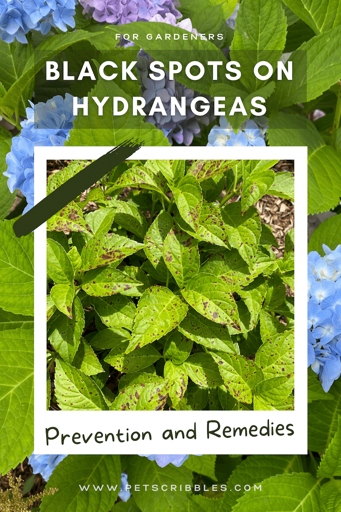
If the leaves are in a sunny spot, try moving them to a shadier location. Another possible cause of brown leaves is too much sun or wind. Wind can also cause the leaves to dry out, so if you live in a windy area, try to protect the plants with a windbreak. Hydrangeas need some sun to bloom, but too much sun can scorch the leaves.
If the soil is constantly wet, the roots can rot and the leaves will turn brown. Make sure you are only watering the plants when the soil is dry, and improve drainage by adding organic matter to the soil. Finally, brown leaves can be a sign of overwatering or poor drainage.
Constricted Root
This is a common problem with hydrangeas and can be caused by a variety of factors, including too much or too little water, compacted soil, or a lack of nutrients. If you notice your hydrangea leaves turning brown and appearing dry and crispy, it is likely due to constricted root.
You can do this by hand or with a garden tool. Once the soil is loosened, you will need to water your hydrangea deeply to encourage new growth. Be sure to water at the base of the plant, not from above, to avoid wetting the leaves. To solve the problem of constricted root, you will need to loosen the soil around the roots of your plant.
If you live in an area with hot summers, you may also need to provide your hydrangea with some shade to prevent the leaves from burning. In addition, you will need to fertilize your plant regularly to ensure that it is getting the nutrients it needs.
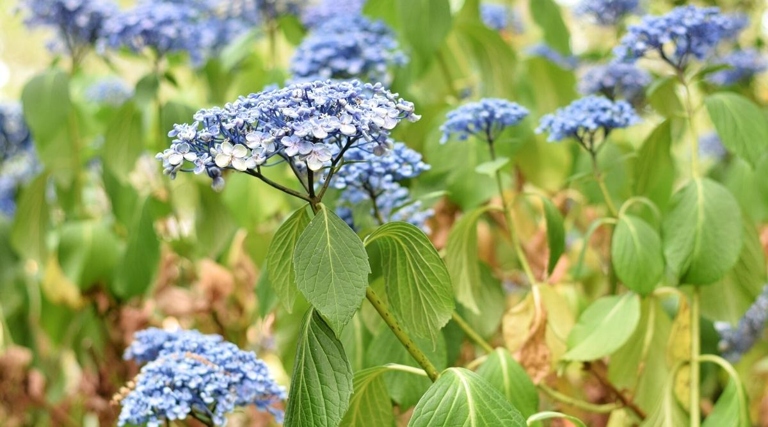
With a little care, you can prevent constricted root in your hydrangea and keep your plant healthy and happy.
How to Fix:
Second, check your soil. If you see any diseases, treat with a fungicide. Water early in the day so the leaves have time to dry before nightfall. Hydrangeas need partial to full shade. Third, check your watering schedule. If your soil is too dry, water more frequently. Fourth, check for sun damage. If they are getting too much sun, move them to a shadier spot. If it is too wet, improve drainage. Finally, check for nutrient deficiencies. First, check for pests or diseases. Hydrangeas need moist, well-drained soil. If your hydrangea is not getting enough nutrients, fertilize with a balanced fertilizer. If you see any pests, remove them by hand or with a pesticide. If your hydrangea leaves are turning brown, there are a few potential causes and solutions.
Deficiency or Excess Nutrient
When it comes to the health of your hydrangea, leaves turning brown is usually indicative of a nutrient deficiency or excess. While there are many possible causes, the most common culprits are lack of nitrogen, phosphorus, or potassium.
If your hydrangea’s leaves are turning brown and you suspect a nutrient deficiency, the best course of action is to have your soil tested. This will help you determine which nutrient is lacking and how best to amend the soil.
If you suspect an excess of a nutrient, you can try leaching the soil with water to flush out the excess. However, be sure to do this gradually and carefully, as too much water can also cause problems.
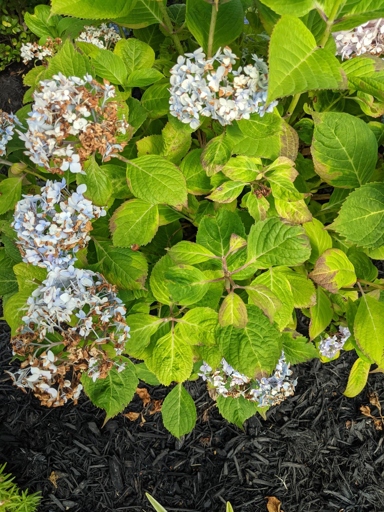
Brown leaves can also be caused by drought stress, so make sure to keep an eye on your plant’s watering needs. In either case, it’s also important to make sure your hydrangea is getting enough water.
How to Fix:
If your hydrangea leaves are turning brown, there are a few possible causes and solutions. If you see any diseases, treat them with a fungicide. Make sure to water your plant regularly. First, check for pests or diseases. Move your plant to a shadier spot or protect it from the wind with a screen. If you see any pests, remove them by hand or with a pesticide. Finally, the leaves may be turning brown from lack of water. If neither of these is the problem, the leaves may be turning brown due to too much sun or wind exposure.
Inadequate Light
If your hydrangea leaves are turning brown, it could be a sign of inadequate light. While hydrangeas can tolerate some shade, they need at least four hours of direct sunlight each day to thrive. If your hydrangea is not getting enough light, it will start to produce fewer flowers and its leaves will turn brown.
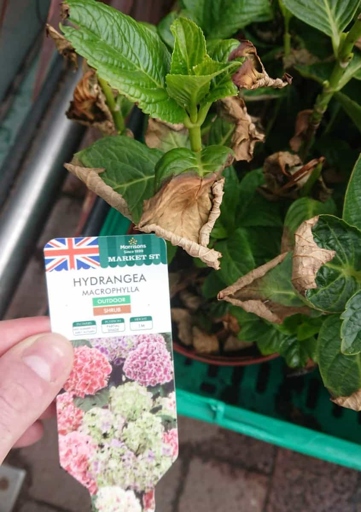
To solve this problem, move your hydrangea to a location that gets more sunlight. This will help your hydrangea to stay hydrated and prevent its leaves from burning. If possible, choose a spot that gets morning sun and afternoon shade.
How to Fix:
If your hydrangea leaves are turning brown, don’t despair! There are a few things you can do to fix the problem.
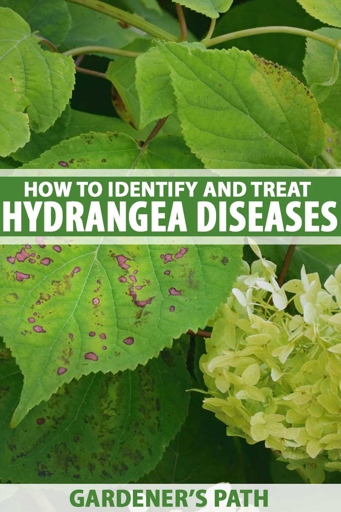
Move the plant to a shadier spot and see if that helps. If they’re not, give them a good watering. First, check to see if the leaves are getting enough water. If the leaves are still brown after watering, it’s possible that they’re getting too much sun.
Aphids, scale, and mites can all cause brown leaves. If the leaves are still brown, it’s time to check for pests. If you see any pests, treat the plant with an insecticide.
This won’t cure the problem, but it will improve the plant’s appearance. Finally, if all else fails, you can try pruning the affected leaves.
With a little patience and care, you can get your hydrangea leaves back to their green glory!
Low Humidity
If you notice your hydrangea leaves turning brown, it could be due to low humidity. Hydrangeas are native to humid climates and require high humidity to thrive. If the air around your hydrangea is too dry, the leaves will start to turn brown and drop off.
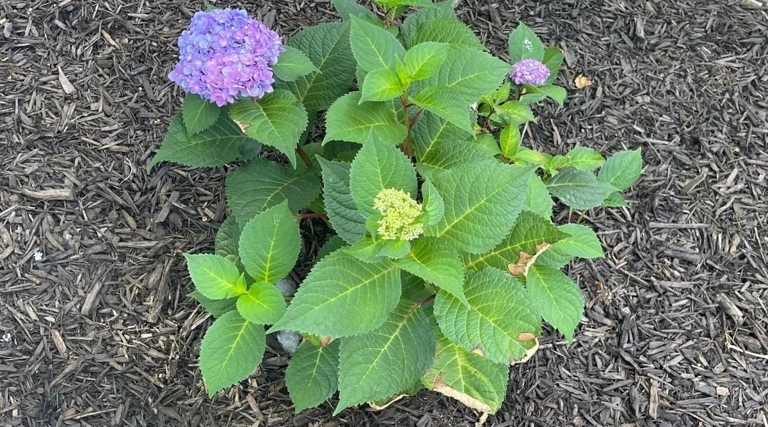
You can also try grouping your hydrangea with other plants to create a more humid environment. If you live in a particularly dry climate, you may need to water your hydrangea more often to keep the leaves from turning brown. To increase the humidity around your hydrangea, try misting the leaves with water several times a day or placing a humidifier near the plant.
How to Fix:
If your hydrangea leaves are turning brown, don’t despair! There are a few things you can do to fix the problem.
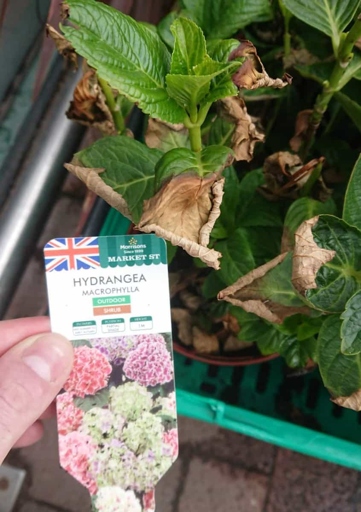
First, check the soil. If it is too dry, give the plant a good watering. If the soil is too wet, try to improve drainage by adding some organic matter.
If it is in too much shade, try moving it to a sunnier spot. If it is in too much sun, try moving it to a shadier spot. Next, take a look at the plant’s environment.
If you see any insects on the plant, remove them and treat the plant with an insecticide. Finally, check for pests.
With a little bit of care, you can get your hydrangea back to looking its best!
Potted Hydrangea Leaves Turning Brown Due to Poor Drainage
Potted hydrangeas are a beautiful addition to any home, but they can be a bit finicky. One of the biggest problems you may encounter is brown leaves, which can be caused by poor drainage.
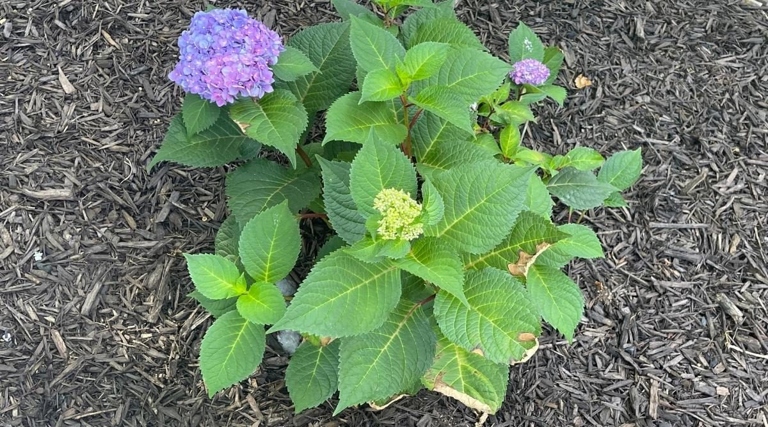
The leaves will turn brown and eventually drop off. If the pot doesn’t have adequate drainage holes, the roots will sit in water and the plant will start to suffocate. To fix the problem, simply repot the hydrangea in a pot with proper drainage.
If you notice the leaves starting to turn brown, act quickly. The sooner you repot the plant, the better its chances of recovery.
How to Fix:
If your hydrangea leaves are turning brown, it could be caused by a number of things. Here are some possible causes and solutions:
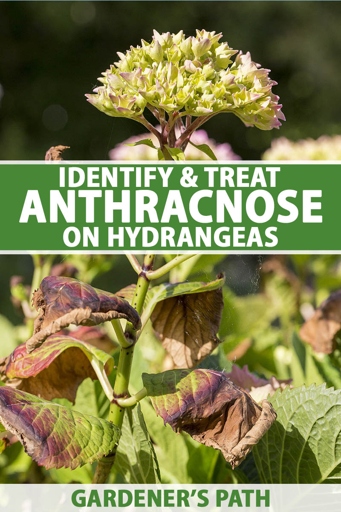
Move it to a shadier spot and see if that helps. 1. Too much sun: If your hydrangea is getting too much sun, the leaves will start to turn brown.
Make sure you’re watering your hydrangea regularly and deeply. Not enough water: If the soil is too dry, the leaves will start to turn brown. 2.
Too much fertilizer: If you’ve been fertilizing your hydrangea too much, it could be causing the leaves to turn brown. Cut back on the fertilizer and see if that helps. 3.
4. Treat the pests with an insecticide and see if that helps. Pest infestation: If you see pests on your hydrangea, such as aphids or scale insects, they could be causing the leaves to turn brown.
Disease: If your hydrangea has a disease, such as powdery mildew, it could be causing the leaves to turn brown. Treat the disease with a fungicide and see if that helps. 5.
How to Maintain Healthy Hydrangea Leaves?
These problems can be caused by environmental factors, such as too much sun or wind, or by pests and diseases. Hydrangea leaves are susceptible to a number of problems that can cause them to turn brown.
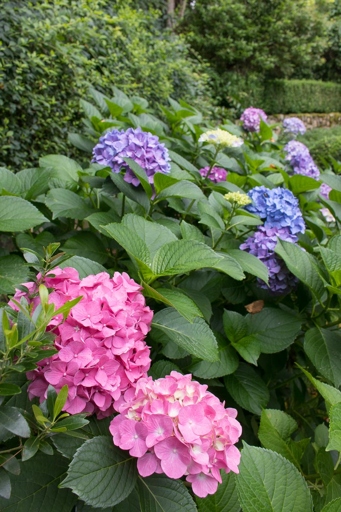
To keep your hydrangea leaves healthy, it is important to water them regularly and to fertilize them with a balanced fertilizer. If the leaves start to turn brown, you can try spraying them with a solution of water and vinegar.
Frequently Asked Questions
1. Why are my hydrangea leaves turning brown?
There are several reasons why hydrangea leaves may turn brown. These include over- or under- watering, too much or too little sunlight, and nutrient deficiencies.
2. What is the best way to water my hydrangeas?
The best way to water hydrangeas is to soak the ground around the plant thoroughly, about once a week. Allow the soil to dry out in between waterings to prevent root rot.
3. Why are my hydrangea leaves turning yellow?
Yellowing leaves can be caused by too much sun, nutrient deficiencies, or pests. If the leaves are only lightly yellowed, they may just need more water.
4. How much sun do hydrangeas need?
Hydrangeas need at least 4 hours of sunlight per day, but prefer filtered light or dappled shade. Too much sun can cause the leaves to turn yellow or brown.
5. What type of fertilizer do hydrangeas need?
Hydrangeas need a fertilizer with a ratio of 2-1-1 or 3-1-1, applied in early spring and again in mid-summer. Avoid using a fertilizer with a high nitrogen content, as this can cause the leaves to turn yellow.
6. What are the most common pests that affect hydrangeas?
The most common pests that affect hydrangeas are aphids, scale, and whiteflies. These pests can cause the leaves to turn yellow or brown and should be treated with an appropriate insecticide.
7. What are the most common diseases that affect hydrangeas?
The most common diseases that affect hydrangeas are powdery mildew and root rot. Powdery mildew can be treated with a fungicide, and root rot can be prevented by watering the plants properly.
8. What can I do if my hydrangea is not blooming?
There are several reasons why a hydrangea may not bloom. These include too much or too little sunlight, nutrient deficiencies, and pruning at the wrong time. If the plant is getting enough sun and is properly fertilized, it may just need to be pruned in late winter or early spring.
9. Can I prune my hydrangea in the summer?
No, you should not prune your hydrangea in the summer. Pruning in the summer can remove the buds that will produce next year’s flowers. The best time to prune hydrangeas is in late winter or early spring.
10. What is the best way to store hydrangeas?
The best way to store hydrangeas is to cut the stems and place them in a vase of water. Change the water every few days and keep the vase in a cool, dark place.
Final thoughts
If you have hydrangeas and their leaves are turning brown, don’t fret! There are a few possible causes and solutions. First, check for pests and disease and treat accordingly. Second, make sure the plant is getting enough water – hydrate if necessary. Finally, consider the plant’s location – it may be too hot or cold, or getting too much or too little sun. With a little investigation and TLC, you should have your hydrangeas looking beautiful again in no time!
